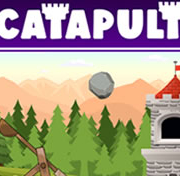Louis Pasteur Facts, Science Game
Who was Louis Pasteur? And what is ‘pasteurization’? This game will help children learn key facts about the French chemist and microbiologist, Louis Pasteur. Widely known for his successful invention of the process of pasteurization – i.e., killing microbes and preventing spoilage in beer, milk, and other goods – Louis Pasteur showed us that microorganisms caused fermentation and disease. Play this game to learn more facts about Louis Pasteur.
Louis Pasteur Facts
Did you know that Louis Pasteur was a French scientist? If not, you should know that he invented vaccines for cholera, tuberculosis, anthrax, yellow fever, and rabies. This article covers Louis Pasteur Facts so you know what he did and what he accomplished. There are some interesting facts about Pasteur, including the idea that a person is left-handed or right-handed.
Pasteur was a French scientist
Born in Dole, France, on December 27, 1822, Louis Pasteur was a poor student who preferred to spend his spare time fishing and sketching portraits of his family instead of attending school. His father, a decorated former sergeant major in Napoleon Bonaparte's army, was also a tanner. His mother, Jeanne-Etiennette Roqui, was a homemaker and a skilled seamstress. Louis attended an elementary school in Arbois, where he performed poorly compared to his peers, even though he was the youngest of the group. Louis began attending school at the age of eight and was rated as middling in academic ability.
He discovered the notion of being left-handed or right-handed molecules
The chemist and scientist Louis Pasteur, who worked at the ENS in Paris, was the first to discover the concept of being left-handed or right-handed molecules. Pasteur began by studying crystals, then went on to study the nature of microbes and germs. His findings eventually led to the concept of stereochemistry. He worked as a laboratory assistant and eventually became head of the ENS. His career included many changes, including teaching briefly at the University of Strasbourg and Lille and the Sorbonne. He eventually moved to Paris and directed the Pasteur Institute until his death in 1895.
He invented vaccines for cholera, diphtheria, rabies, yellow fever, tuberculosis and anthrax
In the late nineteenth century, diseases such as fowl cholera and anthrax were still killing children in the American Southwest. Yellow fever crippled the Mississippi Valley in 1878 and was one of the worst medical disasters in U.S. history. Pasteur discovered the bacillus that causes anthrax and developed a vaccine for livestock a few years later. And in the 1880s, he also began researching rabies and developed a rabies vaccine for humans.
He had a stroke in 1868
In October 1857, Louis Pasteur left Lille for the Ecole Normale in Paris, where he became the director of scientific studies. His duties included ensuring economic discipline and intercourse with the pupils and families of the institution. He had a passion for science and overcame the constraints of a small laboratory. Even in his last years, Pasteur was plagued by strokes and was unable to work at his best.
He made his first discovery in 1848
In 1848, a young French scientist named Louis Pasteur made his first major discovery, which helped to solve a chemical mystery. His work led to the development of stereochemistry. He was first employed as a laboratory assistant at the ENS in Paris, and then moved on to other positions, including a brief stint as a teacher at a school in Dijon and the University of Strasbourg and Lille. He eventually became director of the Pasteur Institute, which he headed until his death in 1895.
He was a chemist and physicist
Louis Pasteur was born in Dole, Louisiana on December 27, 1822. He was the son of a tanner. He grew up in the small town of Arbois, and in 1847 he graduated from the Ecole Normale in Paris with a doctorate in chemistry. He was fascinated with chemistry and physics and worked to discover the mechanism of disease.
He worked on fermentation
In the early 19th century, Louis Pasteur worked on fermentation in milk and began the field of microbiology. This seminal work was the first to demonstrate that bacteria and yeast can be used to create fermented food. This discovery would revolutionize the way that humans prepare food and is the first step in understanding how food is preserved. His research established the importance of microbes for everyday endeavors. He also became a "rock star" during the Franco-Prussian War, and was regarded as the father of microbiology.










